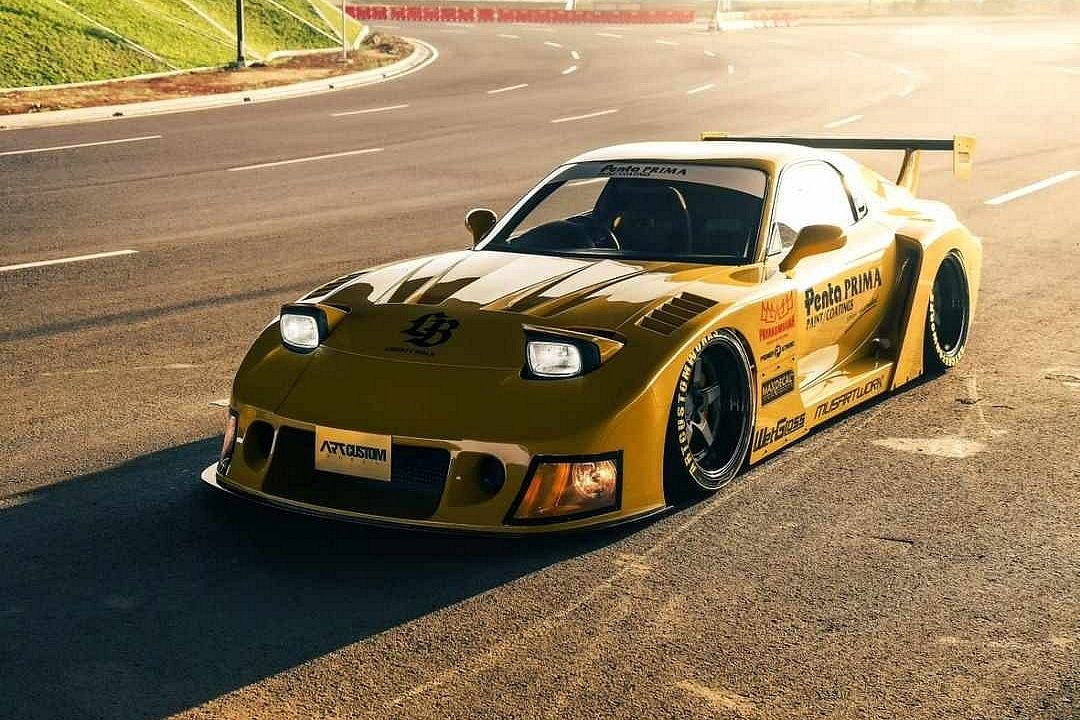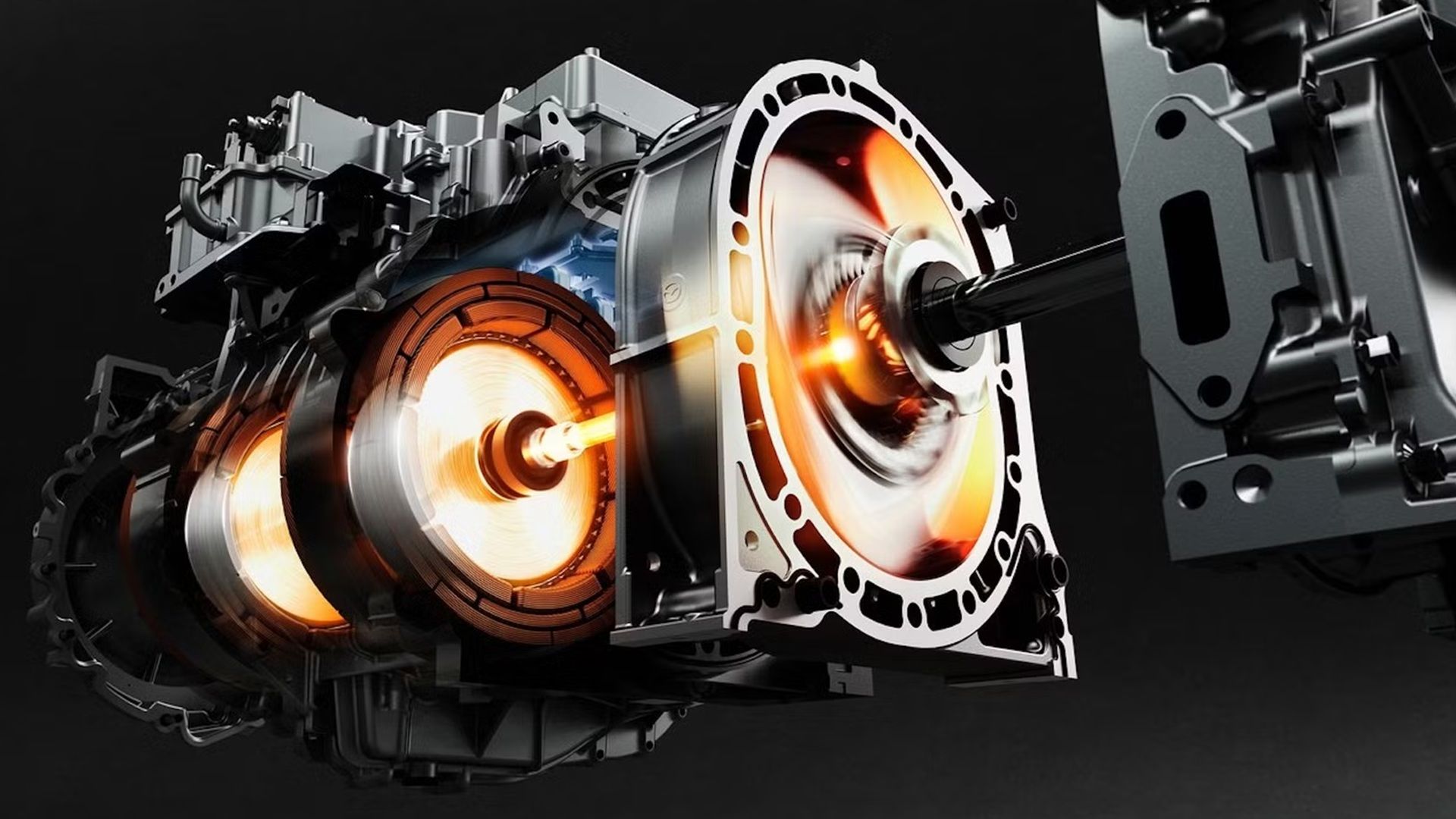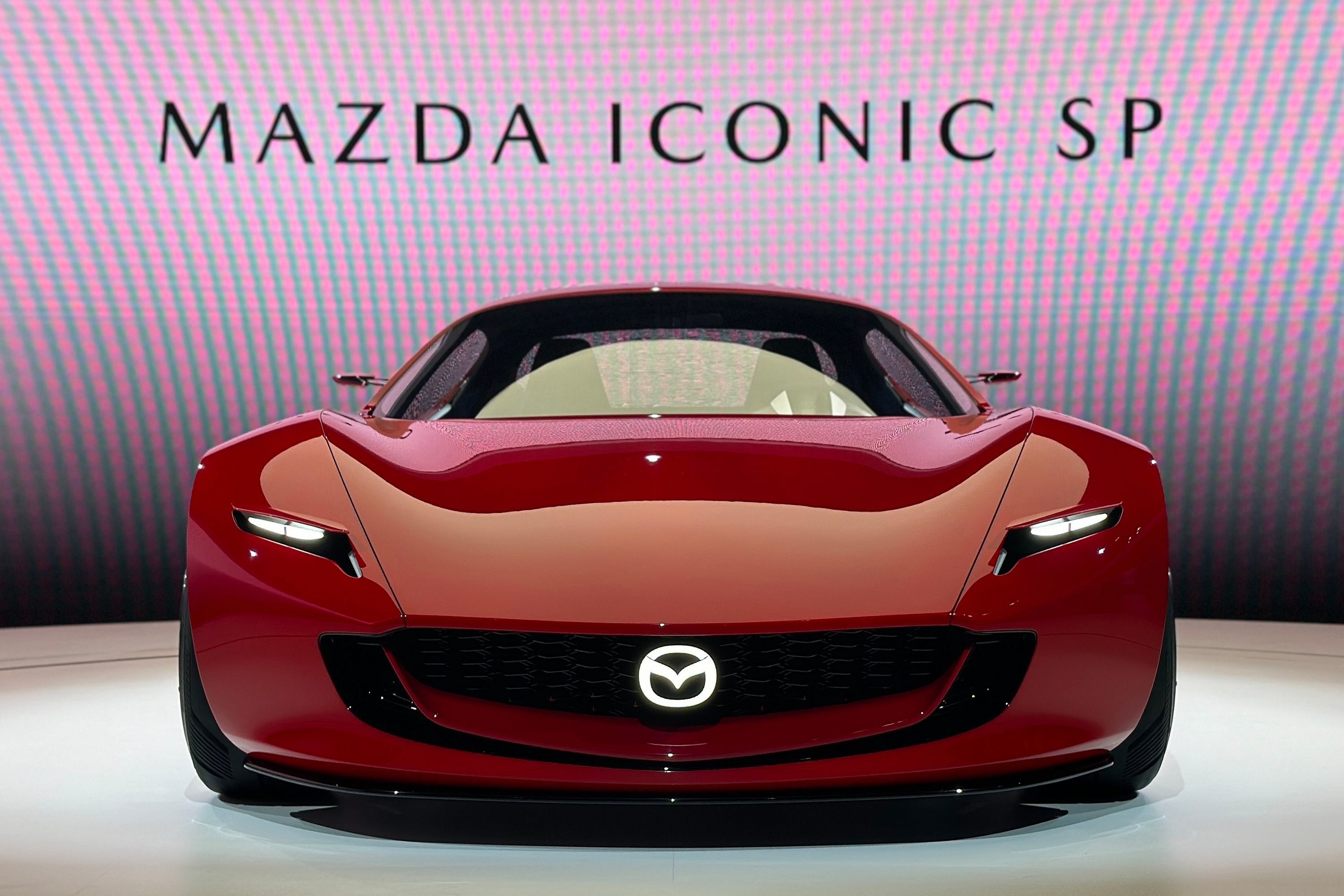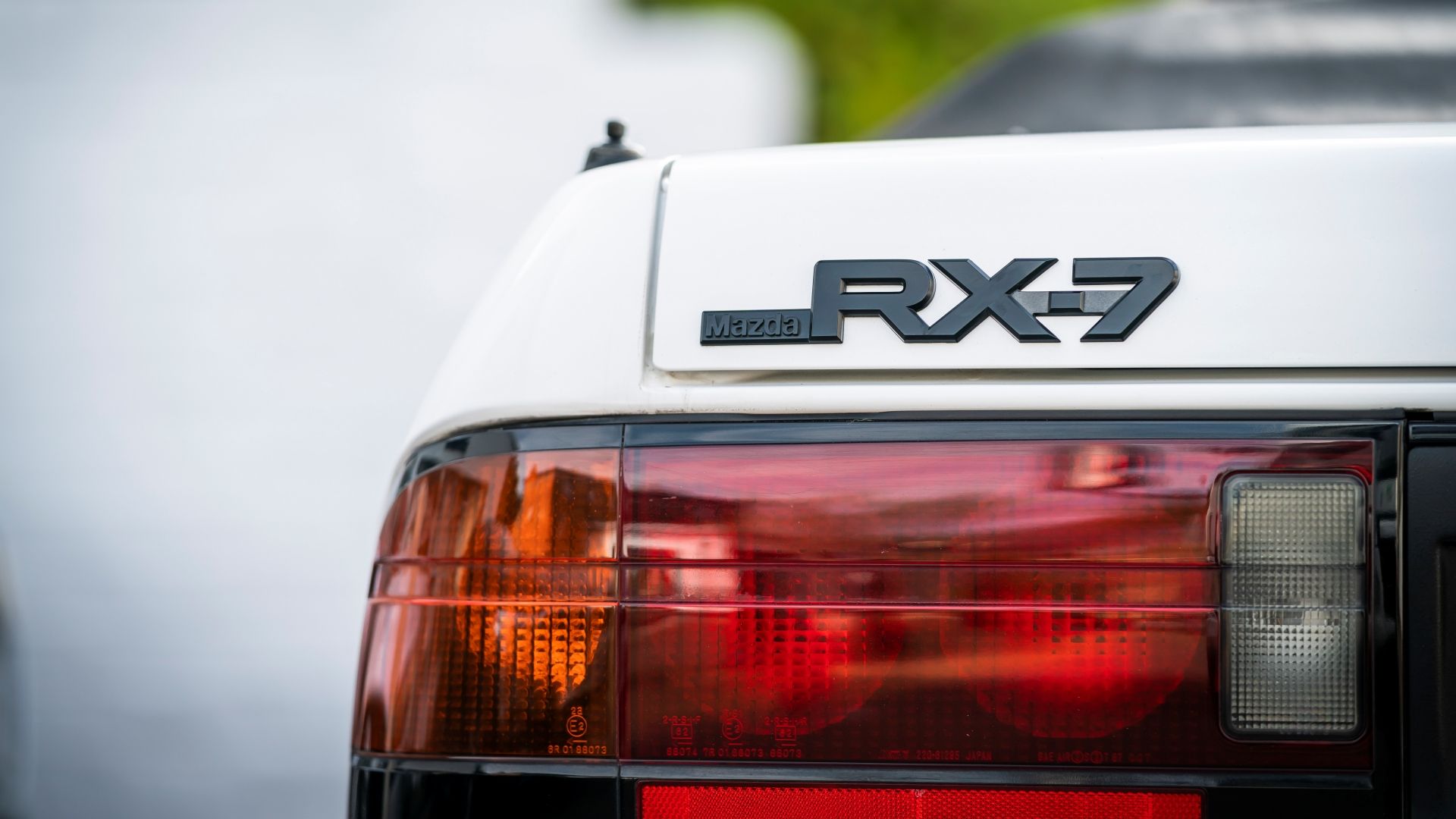Mazda’s sports cars may be few and far between today, with the MX-5 Miata being the only roadster left for a fun track day. But it wasn’t always that way. Powered by a Wankel rotary engine, all three generations of the RX-7 defy normal automotive tradition. Most enthusiasts are aware of the FD RX-7 – the third generation of the brand’s most popular sports car.
Mazda
- Founded
-
January 30, 1920 (as Toyo Cork Kogyo Co)
- Founder
-
Jujiro Matsuda
- Headquarters
-
Hiroshima, Japan
- Owned By
-
Publicly Traded
- Current CEO
-
Masahiro Moro
However, the generation before it is worthy of praise, as well. Dubbed the FC RX-7, the second-gen is often overlooked despite being an exciting, lightweight GT car with both coupe and convertible options. Here is everything you need to know about the Mazda FC RX-7.
A Brief History Of The RX-7
Mazda’s beloved rotary sports car was brought into existence for the 1978 model year for its first generation. Designed by Matasaburo Maeda, the RX-7’s first generation was inspired by the Lotus Elan – a British sports coupe with small, lightweight construction and somewhat low power. This model was powered by a twin-rotor rotary engine mounted in the front of the car, but behind the front axle, earning it a “front mid-engine” car moniker. This gave it a 50/50 weight balance, a low center of gravity, and it weighed just 2,500 pounds. So, despite having low horsepower (only about 101 hp), the first-gen was still a blast to drive.
With the success of Mazda’s gamble on a new sports car and unconventional powertrain, the brand went on to produce two more generations of the RX-7. The second-gen is called the FC, and the third, which is arguably the most popular, is the FD. The FC vs FD RX-7 debate is a brief one, since most tuners and enthusiasts only know and recognize the third-gen model for its iconic, smooth styling – a vast difference compared to the sharp wedge shade of the FC. The last iteration of the RX-7, the FD, sold until the 1995 model year, before the legendary sports car was retired from production. Today, it’s mentioned in the same breathe as other Japanese greats like the Toyota MkIV Supra and the Nissan R34 GTR, and it’s thrilling to see them all side-by-side.
2nd-generation: Mazda RX-7 FC
The FC RX-7 was produced from 1986 to 1991. Overall, it was a huge improvement over the first generation, with nearly double the original’s horsepower, updated styling, and more tech. The FC RX-7’s weight was inflated due to some new features, but not by much. Unladen, the FC RX-7 gained about 350 pounds over the first-gen. With upgrades like leather upholstery and a quieter cabin, the FC was a better grand tourer than the FB while still staying true to its sporty origins.

Related
Mazda RX-7 Inspired By Porsche 935 Is JDM Tuning Done Right
When JDM meets Euro beats, you get a stunning build.
Mazda FC RX-7: Japan’s Porsche 924
Modeled After Excellence
Both the FC RX-7 convertible and coupe were modeled with the goal of openly targeting the Porsche 924 and 944. While some Porsche purists aren’t huge fans of these front-engine sports cars, they’re still incredibly fun and sought-after. When Mazda designed the first RX-7, the FB, it did so by modeling it after a British sports car. In order to stay true to its origins, but still provide upgrades and class to the FC, the brand looked to the Germans. It didn’t exactly copy Porsche’s designs, but Its inspiration is apparent in the FC’s wedge-shaped nose and angular body lines.
The FC’s steering column was still not adjustable, though, and its gauge cluster still sported orange-on-black dials like the FB. Its belt line was higher, creating a tighter enclosure while keeping adequate visibility all around, and the FC came with bigger wheels than the FB. The soft-top convertible keeps similar body lines to the coupe, but the hardtop two-seater is one of the best-looking coupes from the era.
The FC RX-7 Was Born To Win
Mazda Didn’t Come to Mess Around
FC RX-7 horsepower varies depending on which powertrain you choose – the non-turbo version made 147 hp while adding forced induction boosted the power to 185 hp in stock form. While the FC was released for the 1986 model year, buyers didn’t have the option of a turbocharger until the ’89 model year. The N/A version is still a lightweight, well-balanced sports car, but the one to buy today would be the turbo, simply due to the power output, more speed, and the sweet sound of a turbo whistling under the hood.

Related
Mazda’s Rotary Engine Is Ready To Go, It Just Needs Customers
The Iconic SP only needs one more thing to reach production, and you can help.
In addition to the 13B engine in the Turbo II, it’s fitted with independent rear suspension, passive rear steering, more precise rack-and-pinion steering, and disc brakes all around. Like any turbocharged car from this era, there is no anti-lag system – the turbo spools up at around 3,500 RPM, then lunges forward like a proper sports car.
|
Mazda RX-7 FC Specs |
||||||
|---|---|---|---|---|---|---|
|
Powertrains |
Transmissions |
Horsepower |
Torque |
0–60 |
Top Speed |
|
|
1986–1991 RX-7 |
2.4L R2 |
5-speed Manual 4-speed Automatic |
147 hp |
135 lb-ft |
~9.1 seconds |
130 mph |
|
2.4L R2 Turbo |
185 hp |
181 lb-ft |
~6.3 seconds |
143 mph |
||
Why The Rotary Engine Is So Revered
Mazda’s rotary engine may be making a comeback, and we couldn’t be more excited. In general, the FC RX-7 engine is an incredibly smooth rotary with fewer moving parts than a piston engine. There are no reciprocating parts like one would find in a traditional internal combustion engine, which eliminates a significant amount of the typical movement that might wear parts down and be less efficient in conserving energy. It’s also packaged more tightly, giving it a better power-to-weight ratio, and the small, simple design is cheaper to produce. How could we forget, too, that the sound of a rotary is so sweet?
It Doesn’t Last As Long As A Piston Engine
Unfortunately, the Wankel isn’t the most reliable engine of all time. Despite being a thrilling option with unique sound and low weight, the rotary is simply not efficient enough at circulating engine oil to lubricate its rotors. In a typical piston engine, oil is picked up from the oil pan via the oil pump, then pulled through the filter to remove particulates before being injected into various parts of the engine to prevent metal-on-metal contact. A rotary, on the other hand, simply can’t recirculate any oil that enters due to the centrifugal force created by the rotors spinning. The Wankel makes up for this by mixing lubricant into the air-fuel mixture, similar to a two-stroke engine. While this works temporarily, it burns off oil faster than a piston engine would.
How Much Is The Rotary Engine RX-7 Worth Today?
Somewhat Affordable
Buying a JDM FC RX-7 today will set you back anywhere between $10,000 and $20,000 for a model in good condition. Of course, pricing depends on where you are in the country, the car’s condition, how many miles the engine racked up over the last three decades or so, and many more factors. While non-turbocharged and earlier model year examples can go for under $10k, the turbocharged variants are still sought after – not as much as the FD, which can bring in six figures, in some cases. Ultra-low-mileage turbo examples have been sold for between $20k and $30k in the last year across various online auction sites, but the FC in general is a somewhat affordable car to buy today.

Related
Mazda RX-7 Successor Could Be Here Sooner Than We Think
Chief designer Masashi Nakayama has said the automaker wants to put the Iconic SP concept into production.
Summary: The FC RX-7 Is An Underrated Legend
It Deserves More Recognition
The RX-7 is one of the coolest, unique sports cars of our time, and the second-generation deserves more recognition for its impact. Not everybody can afford an FD, even if the third-gen has subjectively better styling and factually more power. The RX-7 was introduced in the late seventies with inspiration based on a British sports car, so it only made sense to model the second generation after an equally interesting and capable sports car from Germany. Styling aside, the FC, especially the turbo version, is a bargain for what it’s capable of. You might pay the price when its rotary falls apart, but as long as it’s still running, you won’t regret the driving experience it provides.
Sources: Mazda
